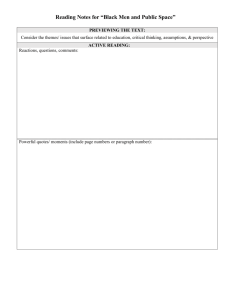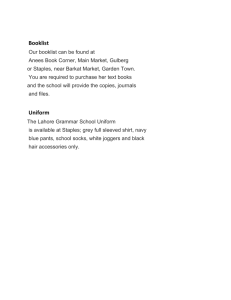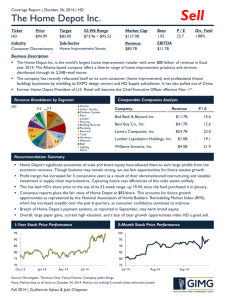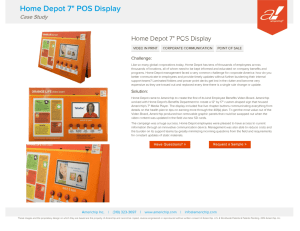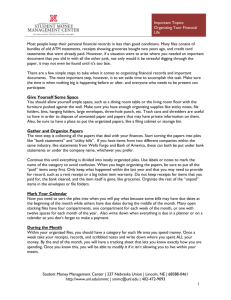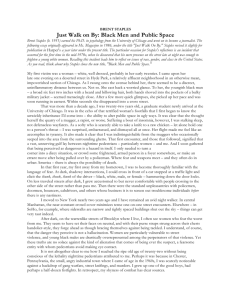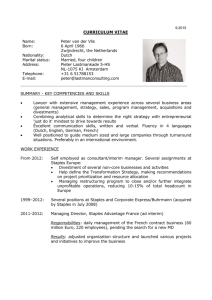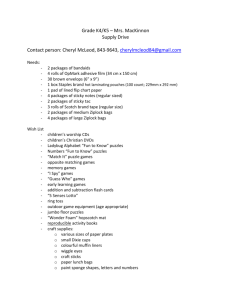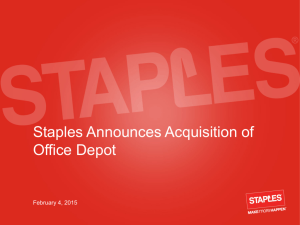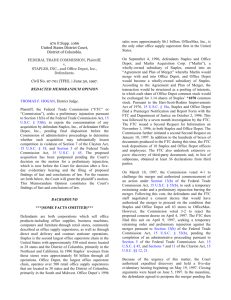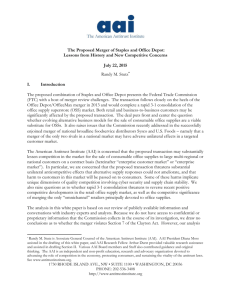Staples Case Study - U.S. Chamber of Commerce
advertisement
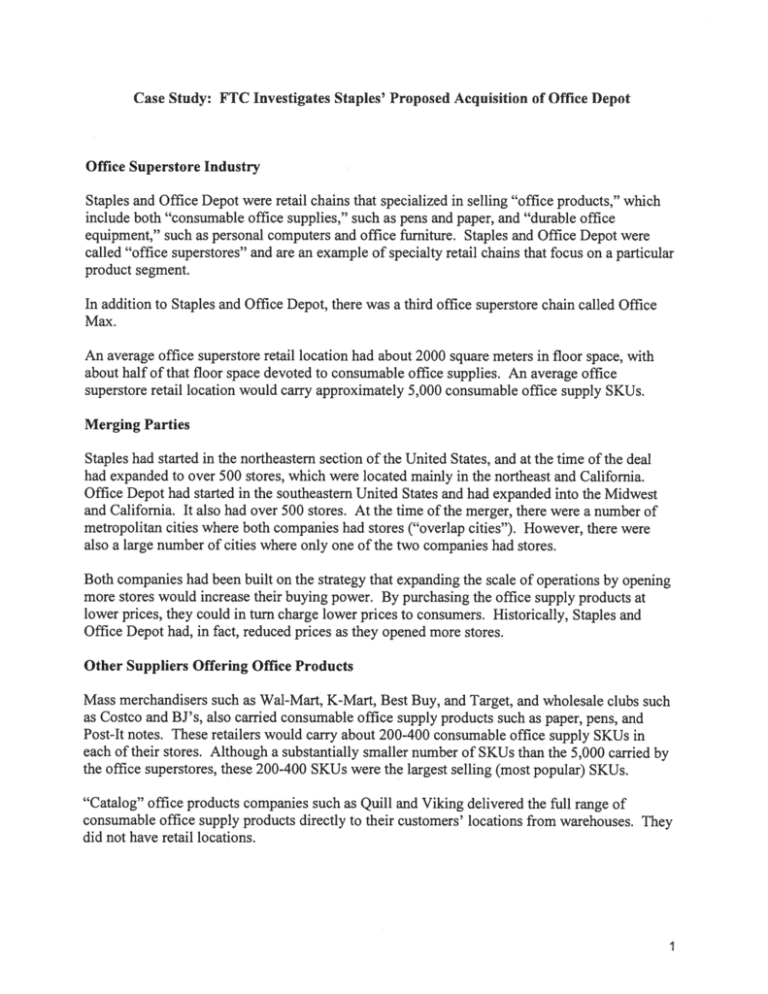
Case Study: FTC Investigates Staples’ Proposed Acquisition of Office Depot Office Superstore Industry Staples and Office Depot were retail chains that specialized in selling “office products,” which include both “consumable office supplies,” such as pens and paper, and “durable office equipment,” such as personal computers and office furniture. Staples and Office Depot were called “office superstores” and are an example of specialty retail chains that focus on a particular product segment. In addition to Staples and Office Depot, there was a third office superstore chain called Office Max. An average office superstore retail location had about 2000 square meters in floor space, with about half of that floor space devoted to consumable office supplies. An average office superstore retail location would carry approximately 5,000 consumable office supply SKUs. Merging Parties Staples had started in the northeastern section of the United States, and at the time of the deal had expanded to over 500 stores, which were located mainly in the northeast and California. Office Depot had started in the southeastern United States and had expanded into the Midwest and California. It also had over 500 stores. At the time of the merger, there were a number of metropolitan cities where both companies had stores (“overlap cities”). However, there were also a large number of cities where only one of the two companies had stores. Both companies had been built on the strategy that expanding the scale of operations by opening more stores would increase their buying power. By purchasing the office supply products at lower prices, they could in turn charge lower prices to consumers. Historically, Staples and Office Depot had, in fact, reduced prices as they opened more stores. Other Suppliers Offering Office Products Mass merchandisers such as Wal-Mart, K-Mart, Best Buy, and Target, and wholesale clubs such as Costco and BJ’s, also carried consumable office supply products such as paper, pens, and Post-It notes. These retailers would carry about 200-400 consumable office supply SKUs in each of their stores. Although a substantially smaller number of SKUs than the 5,000 carried by the office superstores, these 200-400 SKUs were the largest selling (most popular) SKUs. “Catalog” office products companies such as Quill and Viking delivered the full range of consumable office supply products directly to their customers’ locations from warehouses. They did not have retail locations. Computer superstores, such as CompUSA, general retailers such as Best Buy, and PC manufacturers such as Dell sold personal computers and associated equipment. Furniture stores and catalog furniture companies sold office furniture. Customers Office superstore customers consisted primarily of individual consumers with home offices and small businesses with less than 20 employees. Customers typically traveled less than five miles to visit an office superstore. Documents and Other Evidence Staples and Office Depot strategic plans discussed the importance of continuing to lower prices through increasing scale. Staples and Office Depot strategic plans devoted substantially more time analyzing each other’s plans and strategies than those of the mass merchandisers, wholesale clubs, catalog office product companies, and computer superstores. Staples regularly checked the prices of competing retailers in various markets and kept records of these prices. These competitors included Office Depot, Office Max, and Wal-Mart for disposable office supplies and Office Depot, Office Max, CompUSA, and Best Buy for computers. Wal-Mart and BJ’s regularly price-checked against Staples on office supply SKUs. Wal-Mart had announced plans to expand the office supplies section of its retail stores to carry about 2500 SKUs. Staples had documents in which each of its stores was assigned to a “price zone,” which was defined on the basis of whether Office Depot was present. An example of the information provided by these documents is given below. 2 1995 Price for a PaperMate Pen Zone 1 (Office Depot and Staples) Los Angeles New York $0.74 $0.74 Zone 2 (Only Staples) Indianapolis $0.82 1994 Price for a PaperMate Pen Zone 1 (Office Depot and Staples) New York $0.73 Zone 2 (Only Staples) Indianapolis Los Angeles $0.81 $0.76 3
